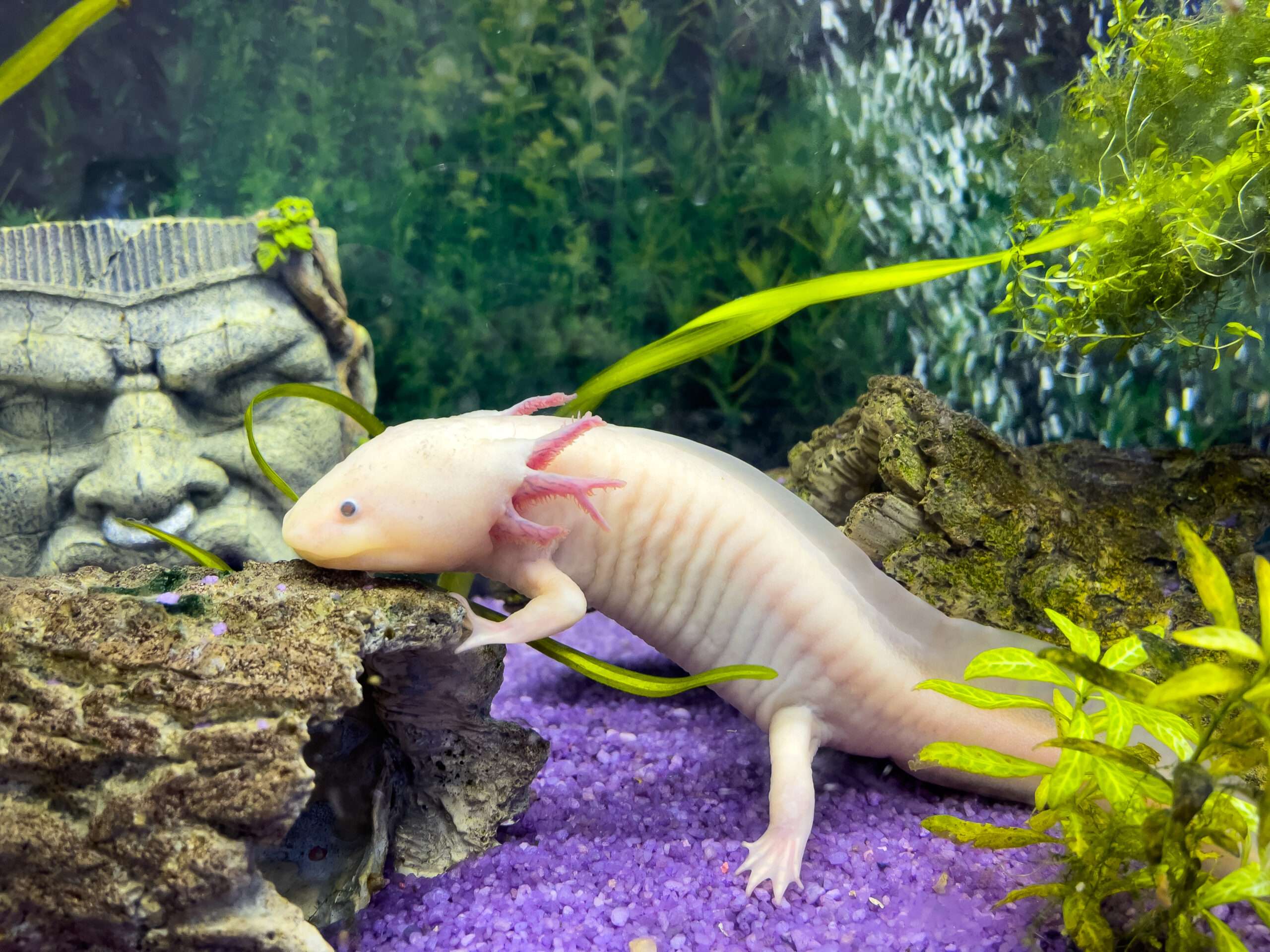Essential Tips for Aquarists

How to Care for and Breed Olive Axolotls: Essential Tips for Aquarists
Olive Axolotls, with their striking greenish-brown hue, are a fascinating species of aquatic salamanders that have captured the interest of many fish enthusiasts and aquarists. These creatures are not only visually appealing but also relatively easy to care for if you understand their needs and natural habitat. In this comprehensive guide, we will explore essential tips for caring for and breeding Olive Axolotls, ensuring you provide the best environment for these unique amphibians.
Understanding Olive Axolotls
Appearance and Characteristics
Olive Axolotls, scientifically known as Ambystoma mexicanum, are a color morph of the Mexican Axolotl. They are distinguished by their olive-green coloration, which can range from a light yellowish-green to a darker, almost brownish hue. These amphibians have feathery external gills, which are a prominent feature and vital for their respiration. Adult Olive Axolotls typically reach a size of 15 cm (6 inches), though some may grow slightly larger under optimal conditions.
Natural Habitat
In the wild, Axolotls are native to the lakes of Mexico City, particularly Lake Xochimilco. They thrive in cool, well-oxygenated waters with a rich supply of aquatic vegetation. Mimicking these conditions in captivity is crucial for their health and well-being. Olive Axolotls are fully aquatic and possess the ability to regenerate lost body parts, a remarkable trait that makes them a subject of scientific study.
Setting Up the Ideal Aquarium
Tank Size and Setup
For Olive Axolotls, a minimum tank size of 40 gallons is recommended to provide ample space for swimming and exploration. A larger tank will accommodate their growth and reduce the risk of territorial disputes if keeping more than one. The tank should be equipped with a secure lid to prevent escapes, as Axolotls are known for their curiosity.
Water Conditions
Maintaining the right water conditions is essential for the health of Olive Axolotls. The ideal water temperature for these amphibians ranges between 16-18°C (60-65°F). Temperatures above this range can stress the Axolotls and lead to health issues. Use an aquarium thermometer to monitor the water temperature and an aquarium chiller if necessary.
The pH level of the water should be slightly acidic to neutral, ranging from 6.5 to 7.5. Regular water testing is crucial to ensure these parameters remain stable. Axolotls are sensitive to changes in water quality, so it’s important to perform regular water changes and use a good filtration system to keep the water clean.
Substrate and Decoration
The substrate in the tank should be smooth to prevent accidental ingestion, as Axolotls may ingest gravel or other sharp objects while foraging. A bare-bottom tank or a fine sand substrate is ideal. Additionally, include plenty of hiding spots and live plants to create a natural and stimulating environment. Driftwood and rocks can also serve as hiding places and help mimic the Axolotls’ natural habitat.
Feeding Olive Axolotls
Dietary Needs
Olive Axolotls are carnivorous and require a diet rich in protein. Their diet should include high-quality pellets specifically designed for amphibians, live or frozen foods such as bloodworms, earthworms, and small fish. It’s important to offer a varied diet to ensure they receive all the necessary nutrients.
Feeding Frequency
Young Olive Axolotls should be fed daily, while adults can be fed every 2-3 days. Overfeeding can lead to obesity and health problems, so it’s crucial to monitor their food intake and adjust portions as needed. Ensure that any uneaten food is removed from the tank to maintain water quality.
Health and Maintenance
Common Health Issues
Olive Axolotls are generally hardy, but they can be prone to certain health issues. Common problems include fungal infections, bacterial infections, and parasitic infestations. Regular observation of your Axolotl’s behavior and appearance can help identify potential issues early. Signs of illness may include changes in skin texture, unusual lethargy, or refusal to eat.
Treatment and Prevention
Maintaining optimal water quality and a clean tank environment is the best prevention against many health issues. If you notice any signs of illness, consult an aquatic veterinarian who specializes in amphibians. Treatment may involve adjusting water parameters, administering medications, or providing supportive care.
Breeding Olive Axolotls
Breeding Conditions
Breeding Olive Axolotls requires careful preparation and the right conditions. To encourage breeding, the water temperature should be lowered to around 14-16°C (57-61°F) to simulate the cooler seasons. Providing a well-maintained tank with a varied diet will also support successful breeding.
Courtship and Egg Laying
During the breeding process, male Axolotls will perform a courtship dance to attract females. This involves swimming in a specific pattern and releasing pheromones. Once a female is receptive, the male will deposit spermatophores (sperm packets) on the substrate, which the female will pick up to fertilize her eggs.
Caring for Eggs and Larvae
After fertilization, the female will lay eggs, usually on surfaces like plants or tank walls. The eggs are small and gelatinous, and they will hatch in 2-3 weeks depending on water temperature. Newly hatched larvae should be provided with small, live food such as infusoria or micro worms. As they grow, they can be gradually introduced to larger foods.
Raising Juveniles
Raising Olive Axolotl juveniles requires careful attention to their diet and tank conditions. Ensure that they have plenty of space to grow and avoid overcrowding, as this can lead to competition and stress. Regular water changes and monitoring of water quality are crucial during this stage.
Conclusion
Caring for and breeding Olive Axolotls can be a rewarding experience for any aquarist. By understanding their natural habitat, setting up the ideal tank environment, providing a nutritious diet, and paying attention to their health and breeding needs, you can ensure that your Olive Axolotls thrive. Whether you are a seasoned aquarist or a beginner, these essential tips will help you create a healthy and stimulating environment for these remarkable amphibians. More Information Here